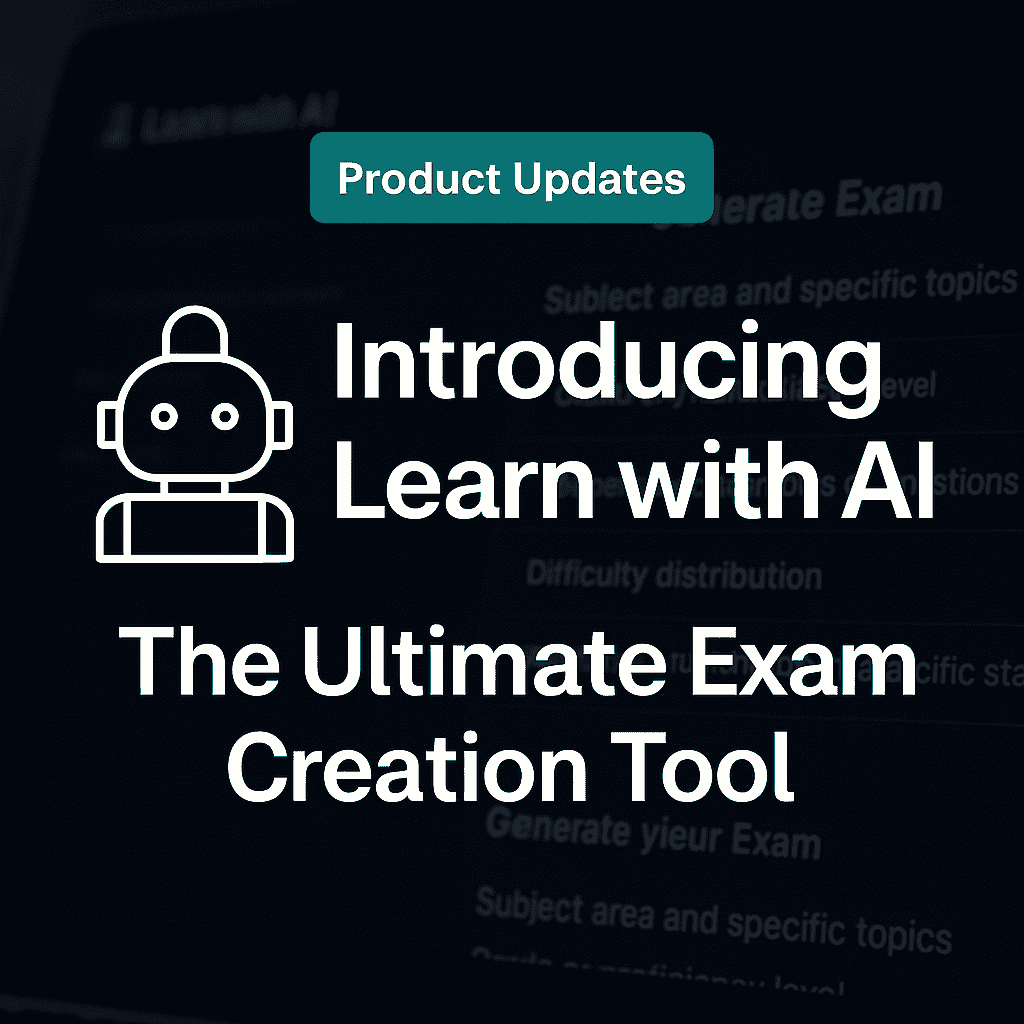
How AI is Revolutionizing Education in 2025

Dr. Emma Rodriguez
February 12, 2025 • 6 min read
The integration of artificial intelligence in education has moved from experimental to essential in 2025. As educational institutions worldwide adapt to changing learning environments, AI technologies are providing unprecedented opportunities to enhance teaching methods, personalize learning experiences, and automate administrative tasks.
The Current State of AI in Education
The integration of AI in education has accelerated dramatically in recent years. According to a report by HolonIQ, the global EdTech market is projected to reach $404 billion by 2025, with AI-powered solutions playing a significant role in this growth. Schools, colleges, and universities worldwide are increasingly adopting AI tools to enhance administrative efficiency, personalize instruction, and support both teachers and students.

The rapid growth of AI adoption in educational institutions from 2018 to 2025
Key Areas Where AI is Transforming Education
1. Personalized Learning Experiences
Perhaps the most significant impact of AI in education is its ability to personalize learning experiences. Traditional classroom settings often struggle to accommodate diverse learning styles, paces, and preferences among students. AI-powered adaptive learning platforms can:
- •Analyze individual learning patterns and preferences
- •Adjust difficulty levels in real-time based on student performance
- •Recommend customized learning resources and activities
- •Provide immediate feedback on student work
- •Create individualized learning pathways that adapt as students progress
Platforms like DreamBox Learning and Knewton have demonstrated that personalized learning can significantly improve student outcomes. A study by Carnegie Mellon University found that students using AI-powered personalized learning tools completed courses 25% faster while achieving better comprehension than those in traditional settings.
2. Intelligent Tutoring Systems
AI-powered tutoring systems are providing students with on-demand assistance outside of classroom hours. These systems use natural language processing and machine learning to:
- •Understand student questions and provide relevant explanations
- •Identify knowledge gaps and misconceptions
- •Offer step-by-step guidance through complex problems
- •Adjust explanations based on student responses and progress
Case Study: Carnegie Learning's MATHia
Carnegie Learning's MATHia platform uses AI to provide personalized math tutoring for middle and high school students. The system continuously analyzes student work, identifies misconceptions, and adjusts its teaching approach accordingly. Schools implementing MATHia have reported up to 2x the growth in math proficiency compared to traditional instruction.
3. Automated Assessment and Feedback
Grading assignments and providing timely feedback are among the most time-consuming tasks for educators. AI tools can now:
- •Grade objective assessments instantly
- •Evaluate written responses and essays for content, structure, and style
- •Provide detailed feedback on areas for improvement
- •Detect patterns in student errors to inform instruction
- •Monitor student progress over time and flag potential issues
Tools like Turnitin's RevisionAssistant and Gradescope are helping teachers reclaim valuable time while providing students with more consistent and comprehensive feedback. A recent study found that teachers using AI grading tools saved an average of 8 hours per week, allowing them to focus more on instructional design and student support.

AI tutoring systems provide personalized, on-demand support

AI assessment tools provide detailed, actionable feedback
4. Content Creation and Curriculum Development
AI is also transforming how educational content is created and delivered. Advanced language models and content generation tools can:
- •Generate practice questions and activities aligned with learning objectives
- •Create customized reading materials at appropriate difficulty levels
- •Develop interactive simulations and learning scenarios
- •Translate content into multiple languages for diverse learners
- •Summarize complex texts and research for different grade levels
Platforms like Learn with AI are helping educators create custom assessments in minutes rather than hours, while maintaining high quality and alignment with learning standards. This democratization of content creation is particularly valuable for teachers in under-resourced settings.
5. Administrative Efficiency
Beyond classroom applications, AI is streamlining administrative processes in educational institutions:
- •Automating routine administrative tasks
- •Optimizing class scheduling and resource allocation
- •Predicting enrollment trends and budget needs
- •Identifying at-risk students for early intervention
- •Enhancing communication between schools, parents, and students
By reducing administrative burden, AI allows educational institutions to allocate more resources to their core mission of teaching and learning.
Ethical Considerations and Challenges
Despite its promise, the integration of AI in education raises important ethical questions that must be addressed:
1. Privacy and Data Security
AI systems require substantial amounts of student data to function effectively. Educational institutions must ensure robust data protection measures and transparent policies regarding data collection, storage, and usage. Students and parents should be informed about what data is being collected and how it's being used to support learning.
2. Equity and Access
There's a risk that AI-powered educational tools could exacerbate existing educational inequalities if they're not made accessible to all students regardless of socioeconomic status. Ensuring equitable access to AI technologies is crucial for preventing a new digital divide.
3. Teacher-AI Collaboration
AI should be positioned as a tool to enhance teacher capabilities rather than replace them. The most effective educational models feature a synergistic relationship between human teachers and AI systems, with each contributing their unique strengths to the learning environment.
4. Algorithmic Bias
AI systems can perpetuate or amplify existing biases if they're trained on biased data or designed with implicit assumptions. Developers and educators must work together to identify and mitigate these biases to ensure fair and inclusive learning experiences.
The Future of AI in Education
Looking ahead, we can expect several exciting developments in the educational AI landscape:
- •Multimodal Learning: AI systems that can process and integrate multiple forms of information (text, speech, images, gestures) to create more immersive and effective learning experiences.
- •Emotional Intelligence: AI that can recognize and respond to students' emotional states, providing appropriate support and adjusting learning experiences accordingly.
- •Extended Reality Integration: Combining AI with virtual and augmented reality to create highly engaging, interactive learning environments that can simulate real-world scenarios.
- •Lifelong Learning Support: AI systems that can accompany learners throughout their educational journey, adapting to changing needs and goals over time.
Conclusion
The integration of AI in education represents a significant paradigm shift with the potential to address many longstanding challenges in education. By personalizing learning, automating routine tasks, and providing powerful analytical insights, AI is helping educators create more effective, efficient, and engaging learning experiences.
However, realizing the full potential of AI in education requires thoughtful implementation that prioritizes pedagogy over technology, respects student privacy, ensures equitable access, and maintains the crucial human elements of teaching and learning. With these considerations in mind, AI can be a powerful force for positive transformation in education, helping to prepare students for success in an increasingly complex and rapidly changing world.

Dr. Emma Rodriguez
Education Technology Researcher and Consultant with over 15 years of experience in implementing AI solutions in educational settings.
Related Articles
 EdTech Trends
EdTech TrendsPersonalized Learning: Tailoring Education with AI
Explore how artificial intelligence is enabling truly personalized learning experiences that adapt to individual student needs.
 EdTech Trends
EdTech TrendsThe Future of Education: AI, Machine Learning, and Beyond
Peer into the future of education technology and discover how AI and machine learning will transform teaching and learning.
 Product Updates
Product UpdatesIntroducing Learn with AI: The Ultimate Exam Creation Tool
Get to know our powerful AI-driven platform that's helping educators create customized, high-quality assessments in minutes instead of hours.